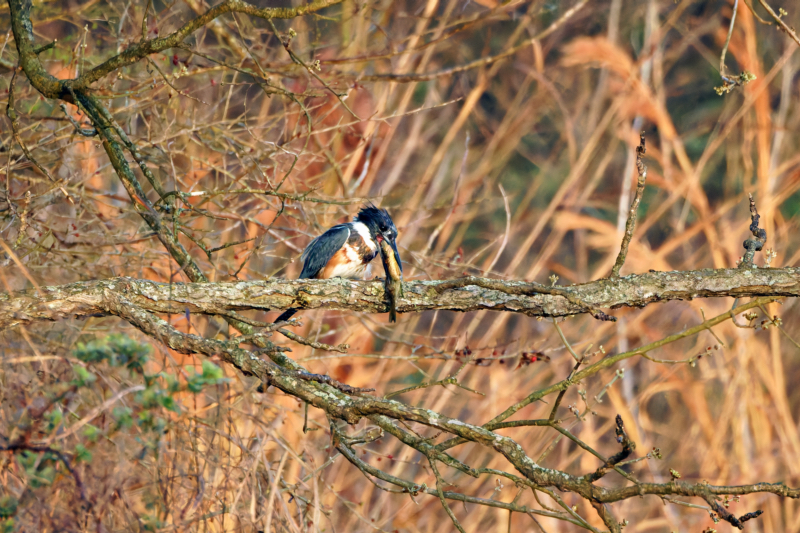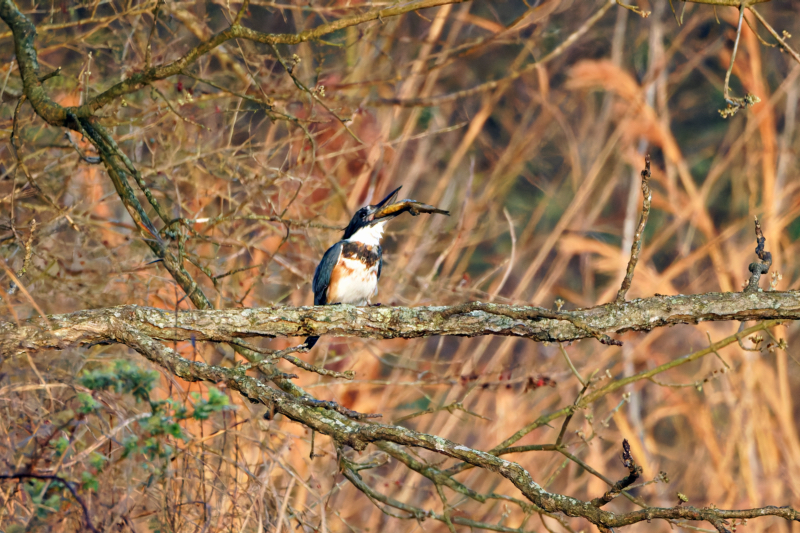A few days ago, I had an amazing wildlife experience at Sequoyah National Wildlife Refuge in Oklahoma. While I was there, I saw a Belted Kingfisher perched on a tree branch. The bird had a fish in its beak, and what happened next was a remarkable display of eating skill.
Instead of just swallowing the fish, the kingfisher repeatedly slammed it against the branch it was sitting on. This behavior may seem unusual, but it’s a well-known technique used by Belted Kingfishers. They slam their prey, which can include fish, minnows, and even small crustaceans, against a hard surface to stun or kill it before swallowing.



This strategy helps in two ways. Firstly, a stunned or dead fish is easier for the kingfisher to manage. While their sharp beaks are well-suited for catching fish, they are not as effective for tearing them apart. By subduing the prey, the kingfisher can more easily swallow it whole.
Secondly, the slamming action helps to break down the fish’s bones, making it easier to digest. This is particularly important for kingfishers, as their digestive systems are not equipped to handle large, hard objects.
The entire process showcases the incredible hunting technique of the Belted Kingfisher. From its perch high above the water, it dives head-first with incredible precision, using its beak like a pair of pincers to snatch its prey. Once back on its perch, the “fish-whacking” behavior ensures a successful and efficient meal.
So, if you’re out photographing or birdwatching, keep an eye out for the Belted Kingfisher. You might just see this fascinating display of nature’s ingenuity!

It’s a wonder she could fly after swallowing that fish! She looks stuffed to her ears!
As soon as she finished swallowing that fish, she dove in the water but came up with nothing. I was surprised she could still be hungry.